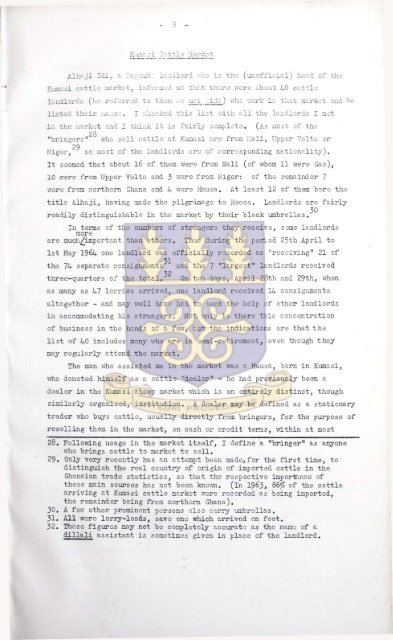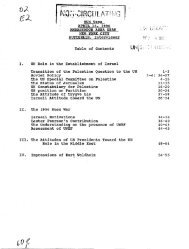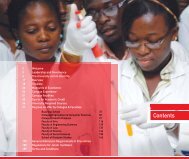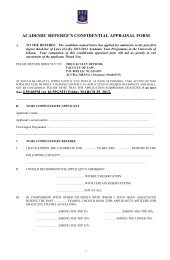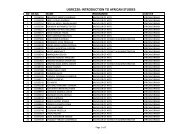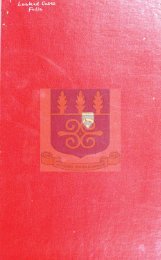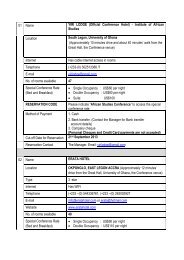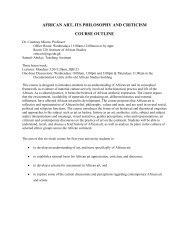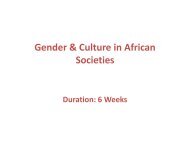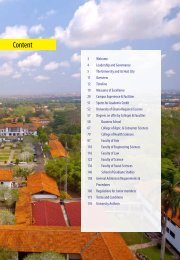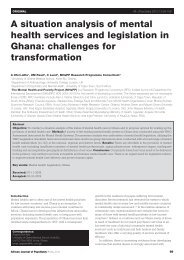View/Open - UGSpace - University of Ghana
View/Open - UGSpace - University of Ghana
View/Open - UGSpace - University of Ghana
- No tags were found...
Create successful ePaper yourself
Turn your PDF publications into a flip-book with our unique Google optimized e-Paper software.
Alhaji Idi, a Dagomb: landlord who is tho (un<strong>of</strong>ficial) head <strong>of</strong> theKumasi cattle market, informed me that there were about 40 cattlelandlords (ho referred to them as mai ,c;ida) who work in that market and helisted their names. I checked this l i s t with a i l the landlords I metin the market and I think i t is fairly complete. (As most <strong>of</strong> the28"bringers" whc sell cattle at Kumasi are from Mali, Upper Volta or29Niger, so most <strong>of</strong> the landlords are <strong>of</strong> corresponding nationality).It seemed that about 16 <strong>of</strong> them nere from Mali (<strong>of</strong> whom 11 were Gao),10 were from Upper Volta and 3 were from Niger: <strong>of</strong> the remainder 7were from northern <strong>Ghana</strong> and 4 were Hausa. At least 12 <strong>of</strong> them bore thetitle Alhaji, having made the pilgrimage to Mecca. Landlords are fairly30readily distinguishable in the market by their black umbrellas.In terms <strong>of</strong> the numbers <strong>of</strong> strangersmorethey receive, some landlordsare much^important than others. Thus during the period 25th April to1st May 1964 one landlord was <strong>of</strong>ficially recorded as "receiving" 21 <strong>of</strong>the 74 separate consignments^ and the 7 "largest" landlords received32three-quarters <strong>of</strong> the total. On two days, April 28th and 29th, whenas many as 47 lorriesarrived, one landlord received 14 consignmentsaltogether - and may well have had to seek the help <strong>of</strong> otherlandlordsin accommodating his strangers. Not only is there this concentration<strong>of</strong> business in the hands <strong>of</strong> a few, but the indications are that thel i s t <strong>of</strong> 40 includes many who are in semi-retirement, even though theymay regularly attend the market.Theman who assisted me in the market was a Hausa, born in Kumasi,who denoted himself as a cattle "dealer" - he had previously been adealer in the Kumasi sheep market which is an entirely distinct, thoughsimilarly organised, institution. A dealer may be defined as a stationarytrader who buys cattle, usually directly from bringers, for the purpose <strong>of</strong>reselling them in the market, on cash or credit terms, within at most28. Following usage in the market itself, I define a "bringer" as anyonewho brings cattle to market to sell.29. Only very recently has an attempt been made,for the first time, todistinguish the real country <strong>of</strong> origin <strong>of</strong> imported cattle in the<strong>Ghana</strong>ian trade statistics, so that the respective importance <strong>of</strong>these main sources has not been known. (In 1963, 86% <strong>of</strong> the cattlearriving at Kumasi cattle market were recorded as being imported,the remainder being from northern <strong>Ghana</strong>).30. A few other prominent persons also carry umbrellas.31. All were lorry-loads, save one which arrivod on foot.32. These figures may not be completely accurate as the name <strong>of</strong> ad i l l a l i assistant is sometimes given in place <strong>of</strong> the landlord.


